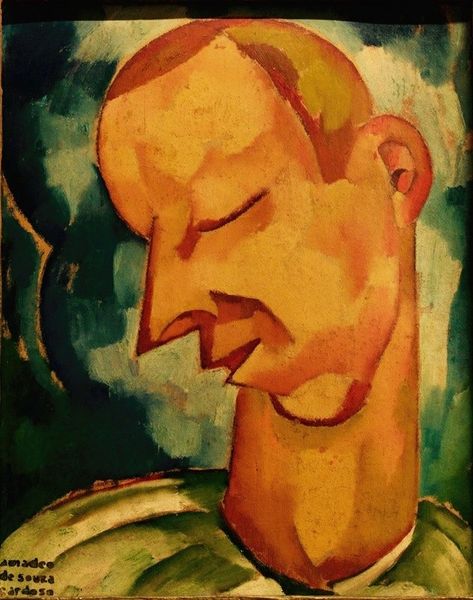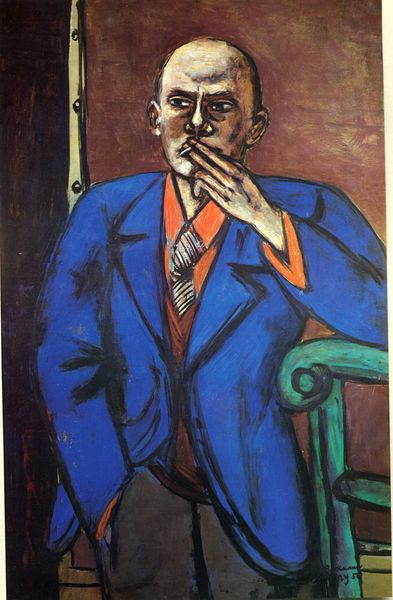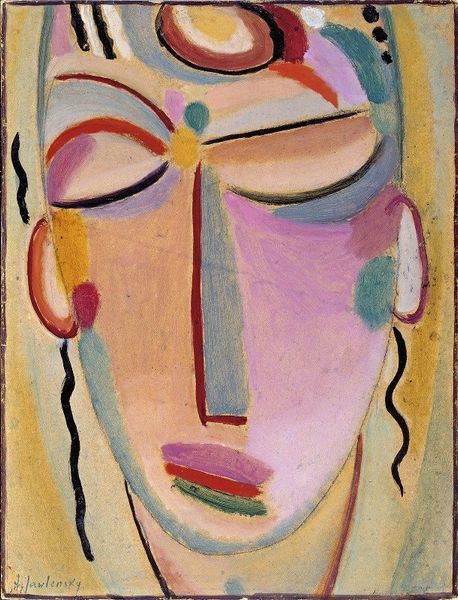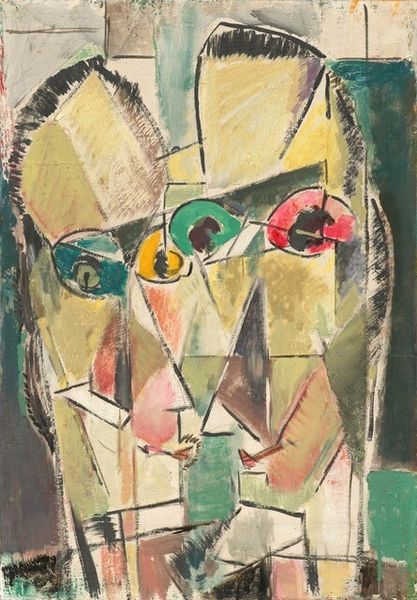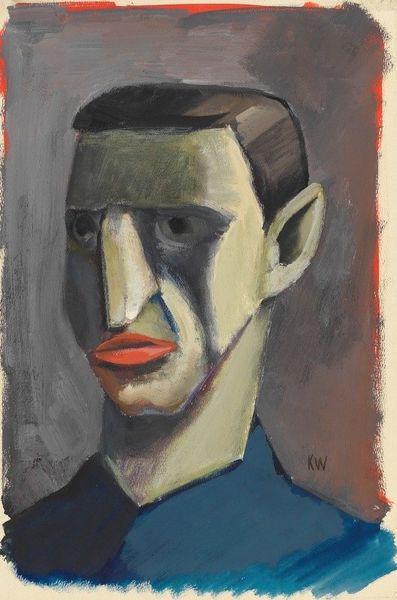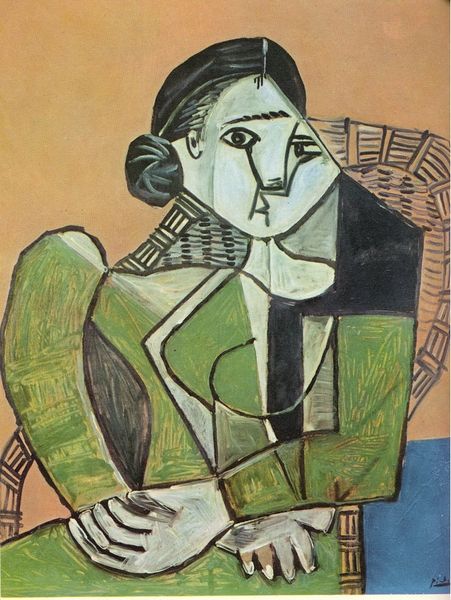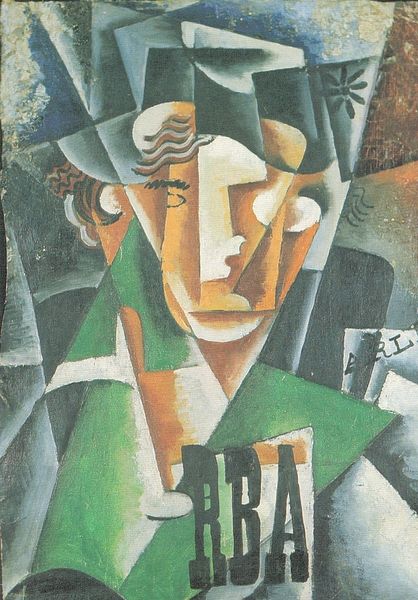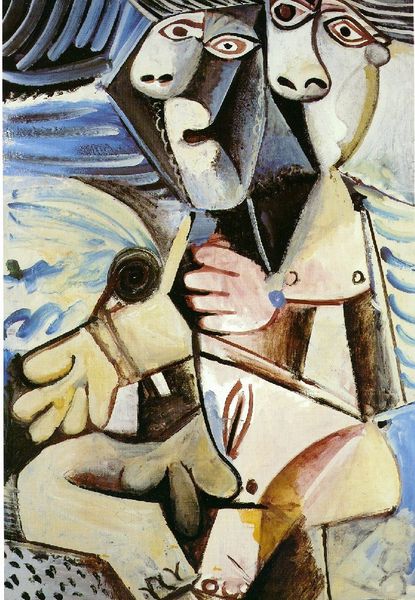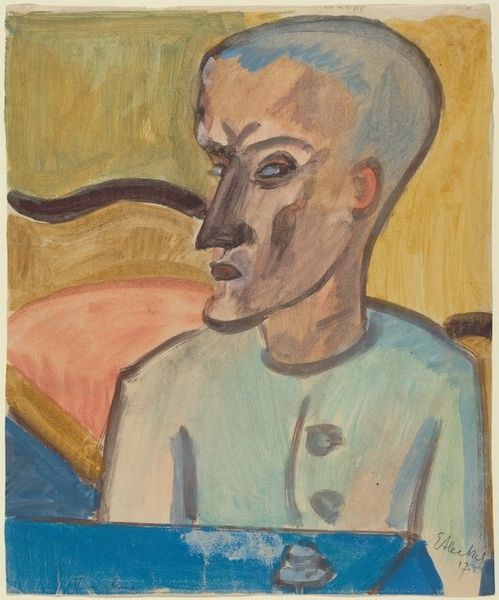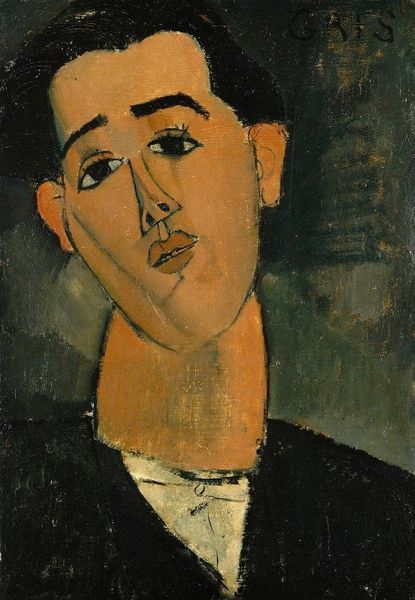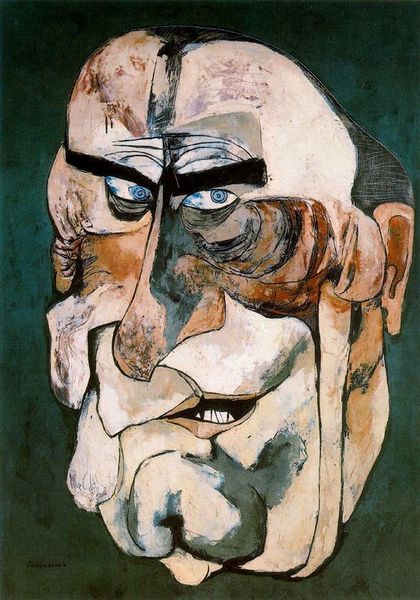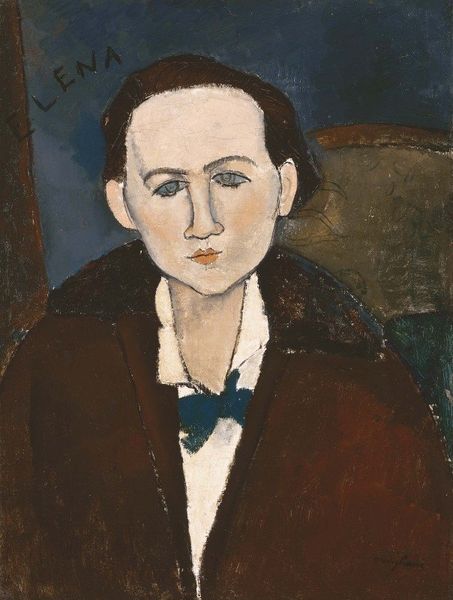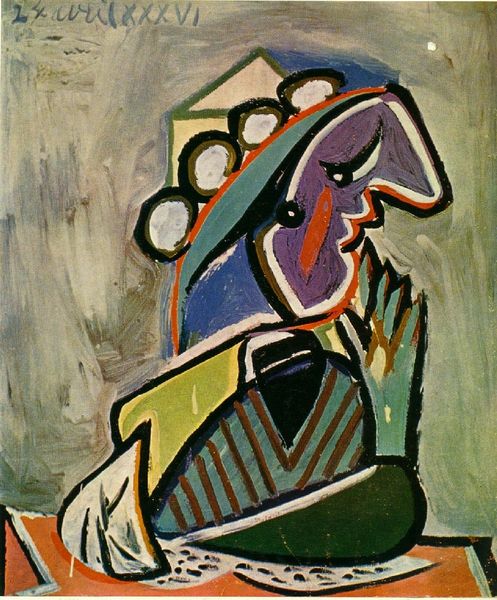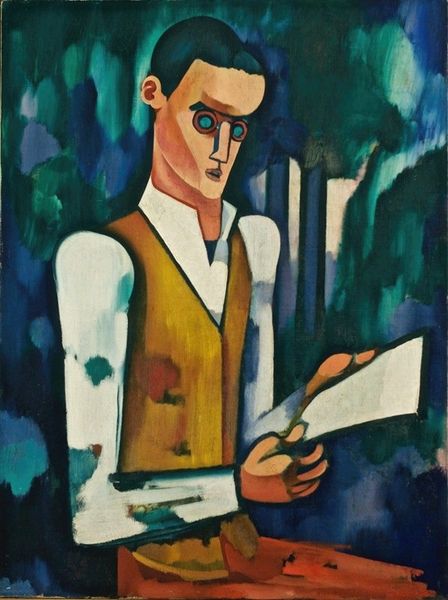
painting, oil-paint
#
portrait
#
abstract painting
#
painting
#
oil-paint
#
oil painting
#
expressionism
Copyright: Public Domain: Artvee
Editor: This is “O Rata,” an oil painting by Amadeo de Souza-Cardoso from around 1914-1915. It’s…striking. The palette is almost aquatic, but the figure feels harsh and angular. What do you make of it? Curator: Angularity indeed. The title translates to “The Rat.” Notice how Souza-Cardoso uses sharp lines to almost caricature the subject. This exaggerated realism borders on psychological unveiling, doesn’t it? Consider the rat as a historical symbol – often linked to plague, decay, or things hidden in the shadows. Editor: So, are you saying he's portraying the subject as someone… unpleasant? Is it a critique of a specific person? Curator: Perhaps, but symbols are never simple. Consider the avant-garde movements of the time: Expressionism, Futurism…Souza-Cardoso wasn't just painting a portrait; he was exploring how to visually represent inner states. Look at that intense, almost accusatory gaze. What feeling does it evoke in you? Editor: I guess…unsettled. But is the "rat" comparison about the subject's personality or maybe a reflection of societal anxieties? Curator: Precisely! Symbols act as a mirror, reflecting cultural fears and prejudices. "The Rat" could symbolize a personal assessment or capture anxieties permeating society at that time, leading up to the First World War. He lived in Paris amidst significant social tension and innovation. It asks: what's gnawing beneath the surface? Editor: So the painting isn't just a face; it’s a whole network of associations. It's made me realize how much context symbols bring to a work. Curator: Exactly! By understanding the historical weight and multiple connotations of symbols, we unlock richer, often unexpected interpretations within the work.
Comments
No comments
Be the first to comment and join the conversation on the ultimate creative platform.
